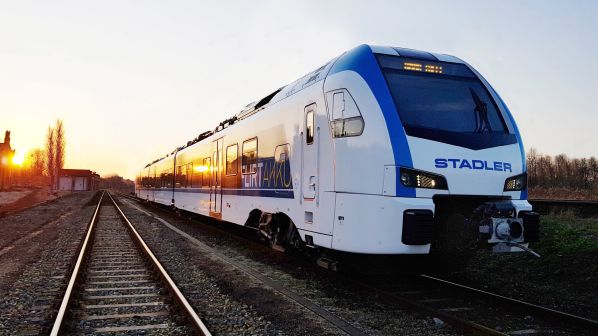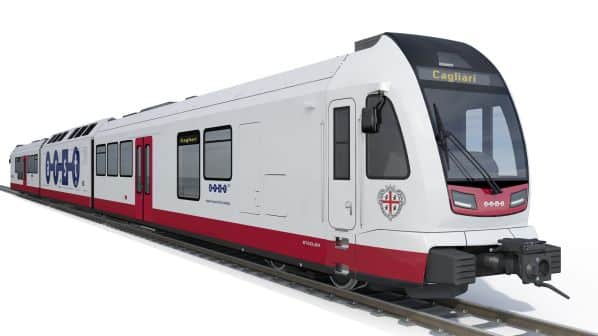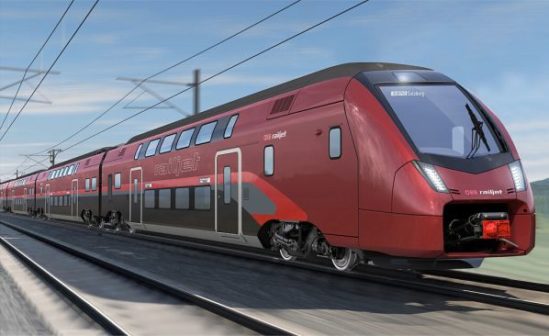ROLLING stock supplier Stadler has reported an order intake of SFr 4.7bn ($US 5.3bn) in the first half of 2023, which it says was driven by “persistent, extremely dynamic demand.”
But as expected, this failed to match the strong performance of the year before, when the order intake was SFr 6bn.
By the end of the first half 2023, the order backlog had risen even further to a record SFr 25.4bn, up from SFr 22bn as of December 31 2022. Neither the intake nor the backlog include orders under framework agreements that have not yet been called off on a binding basis by the customer.
Stadler says that its business is usually subject to strong seasonality, which typically leads to significantly higher revenue and greater profitability in the second half of the year, with one third of revenue generated in the first half and the remaining two thirds in the second half.
While there was a slight shift in favour of the first half in 2022, this year has seen seasonality trends return to normal. This resulted in a 12% decrease in first-half revenue, down at SFr 1.3bn from SFr 1.5bn the year before, with negative currency effects also contributing around 3% to this decline.
Despite ongoing supply chain issues, where Stadler says the situation remains “tense” in some areas, and the impact of geopolitical tension, there were no significant delays to meeting rolling stock delivery schedules.
The operating result at Ebit level was SFr 47.5m in the first half, down from SFr 66.8m the year before. This was mainly due to a non-recurring positive effect of SFr 21.3m in 2022, relating to the acquisition of German signalling supplier BBR Verkehrstechnik (BBR).
Also having a negative impact on Ebit were currency effects of around SFr 15m due to the rise in value of the Swiss franc, especially against the euro.
Currency effects stem mainly from orders processed in Switzerland and invoiced in foreign currencies. Stadler says that it minimises foreign currency risks as far as possible by natural hedging, supplemented by financial hedging. However, currency risks cannot be fully hedged between bid submission and the final signing of a contract, which can sometimes take several years.
At group level, Stadler says that net profit in the first half increased significantly to SFr 25.8m from SFr 2.4m in 2022, when foreign exchange losses had a strong negative impact of SFr 32.1m. In contrast, foreign exchange gains of SFr 3.2m were recorded in the first half of 2023.
The rolling stock segment at Stadler reported an order intake of SFr 3.6bn in the first half of 2023, 27% down on the year before. The order backlog was up 15% at SFr 19.6bn, compared with SFr 17bn as of December 31 2022.
Segment revenue was SFr 1bn, down 16% from SFr 1.3bn in the first half of 2022. This was mainly due to seasonality combined with negative currency effects.
At the service and components segment, order intake was SFr 1.1bn in the first half of 2023, unchanged from the high level of the year before. The order backlog in what Stadler describes as its strategically important service business increased by 18% to SFr 5.6bn compared with a backlog of SFr 4.8bn at the end of 2022.
Revenue at service and components was up 5% year-on-year at SFr 214.6m from SFr 204.2m.
The signalling segment recorded an order intake of SFr 37m in the first half of 2023, up from SFr 15.7m the year before. The order backlog rose to SFr 188.6m from SFr 170.1m at the end of 2022. Revenue was up at SFr 26.4m from SFr 14.6m in the first half of 2022.
Due to persistently solid demand, Stadler expects order intake for the 2023 as whole to be in line with its medium-term financial targets. Assuming no deterioration in economic conditions and no worsening of geopolitical tensions, Stadler expects revenue of between SFr 3.7bn and SFr 4bn in 2023.
As a result of the high order intake, Stadler says that its capacity planning work has demonstrated the need for additional investment in component and final assembly plants in order to process its record order backlog and prevent the risk of future production bottlenecks.
The company says that the acquisition of a site adjacent to its plant in St Margrethen, Switzerland, its group centre of competence centre for the production of double-deck multiple-units, has already created a flexible option for potential future capacity expansion. Stadler is expecting to invest over SFr 200m in 2023.
“Stadler achieved a very good operating performance in the first half of 2023, which was marked by inflation and economic headwinds,” says Stadler Group CEO, Mr Markus Bernsteiner.
“We continue to be extremely successful in the market with our innovative products. This is reflected in the strong order intake of the past six months. Our order books are well-filled and delivery volumes remain at a high level thanks to our robust and resilient organisation.
“The focus on cost discipline, ongoing process optimisation and efficiency improvements is already showing results. Our service and signalling businesses also continue to develop strongly.”
For detailed data on rolling stock orders around the world, subscribe to IRJ Pro.




